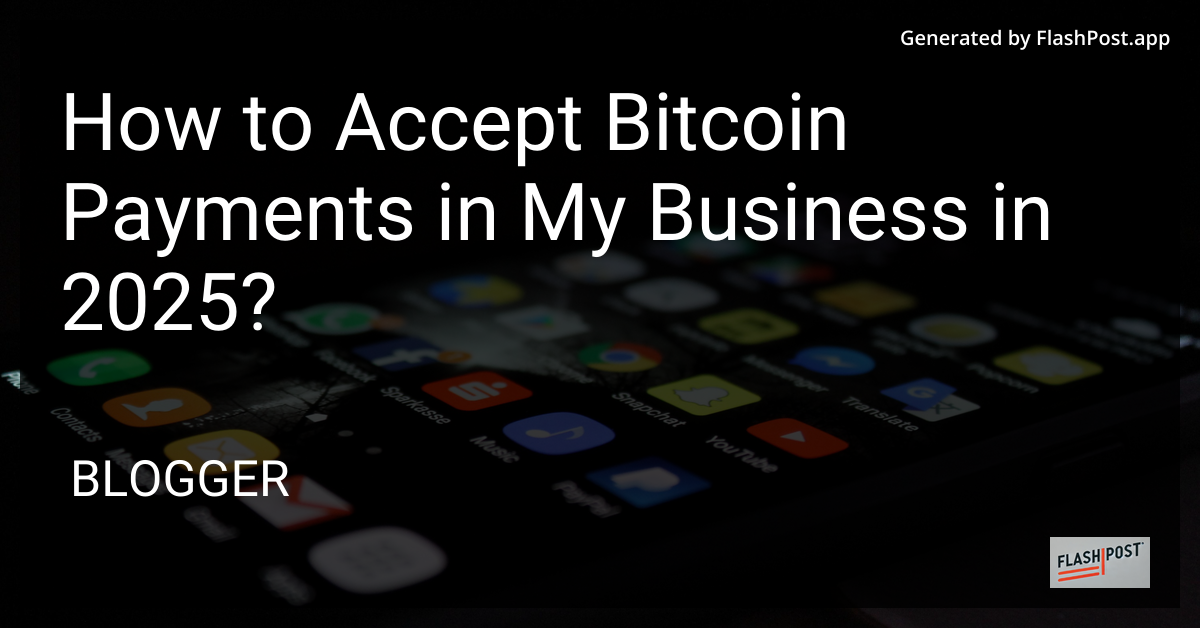How to Accept Bitcoin Payments in My Business in 2025?

How to Accept Bitcoin Payments in My Business in 2025
As the world steadily embraces digital currencies, more businesses are considering accepting Bitcoin as a form of payment. By 2025, accepting Bitcoin payments could become a commonplace practice for entrepreneurs looking to expand their customer base and streamline transactions. This guide will walk you through the steps necessary to integrate Bitcoin payments into your business infrastructure effectively.
Understanding Bitcoin Payments
Before delving into the technical aspects, it’s important to understand what Bitcoin is. Bitcoin is a decentralized digital currency that allows for peer-to-peer transactions over the internet. It operates without a central authority, making it an attractive option for businesses looking to reduce transaction fees and reach a global audience.
Why Accept Bitcoin in 2025?
Global Reach: Bitcoin’s decentralized nature makes it a universal currency, easily transcending borders. Businesses can engage with international customers without the hassle of currency conversion or exorbitant fees.
Reduced Fees: Bitcoin transactions typically involve lower fees compared to credit card payments and wire transfers. This increased efficiency can significantly benefit businesses of all sizes.
Security and Transparency: Bitcoin provides a secure transaction environment due to its underlying blockchain technology. Each transaction is recorded on the blockchain, ensuring transparency and reducing the risk of fraud.
Market Positioning: Accepting Bitcoin can position your business as forward-thinking and innovative, attracting a tech-savvy customer segment.
Steps to Accept Bitcoin Payments
1. Set Up a Bitcoin Wallet
To start accepting Bitcoin payments, you first need to set up a Bitcoin wallet. A Bitcoin wallet is a digital tool that allows you to send, receive, and store Bitcoin securely. There are various types of wallets, such as hardware, software, and online wallets, each offering different levels of security and convenience.
2. Choose a Payment Processor
Select a Bitcoin payment processor to facilitate transactions between your business and customers. These processors help convert Bitcoin payments into your local currency and deposit the funds into your bank account. Popular Bitcoin payment processors include BitPay, Coinbase Commerce, and CoinGate.
3. Implement Payment Infrastructure
Integrate Bitcoin payment options into your point-of-sale (POS) system or ecommerce platform. This step may involve APIs and plugins that connect your existing system with the chosen Bitcoin payment processor.
4. Educate Your Team and Customers
Ensure that your team is well-informed about Bitcoin transactions, addressing any questions or concerns. Additionally, educate your customers about the benefits of using Bitcoin, displaying clear instructions on payment procedures.
5. Monitor Market Trends
Bitcoin’s value can be volatile. Stay updated with market trends and consider converting Bitcoin payments into local currency promptly to mitigate potential financial risk.
Promoting Bitcoin Acceptance
Once integrated, promote the option of Bitcoin payments to your customer base. Highlight the benefits through marketing materials and social media channels, showcasing your business as part of the digital currency frontier.
Related Resources
- Learn more about purchasing Bitcoin through our Bitcoin purchase guide.
- Discover ways to buy Bitcoin and make financial transactions smoother.
By embracing Bitcoin payments today, businesses can enjoy operational efficiencies, access new markets, and stay ahead in an increasingly digital economy. Start integrating Bitcoin into your business strategy and reap the benefits of this revolutionary payment method by 2025.
Comments
Post a Comment